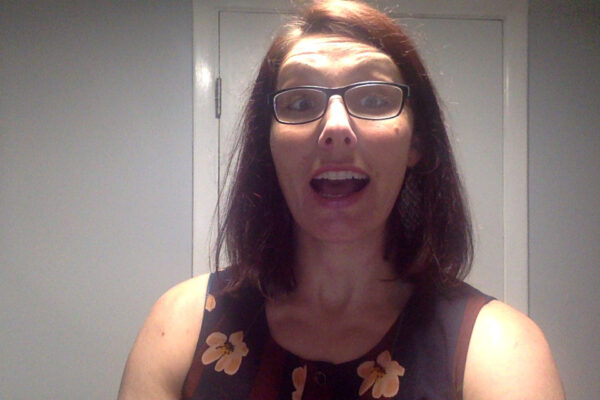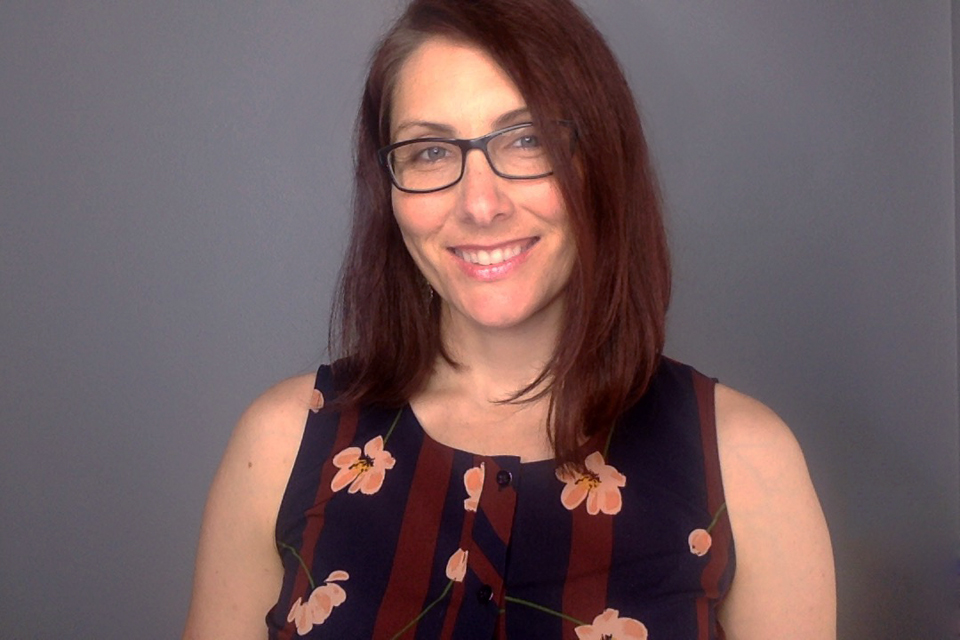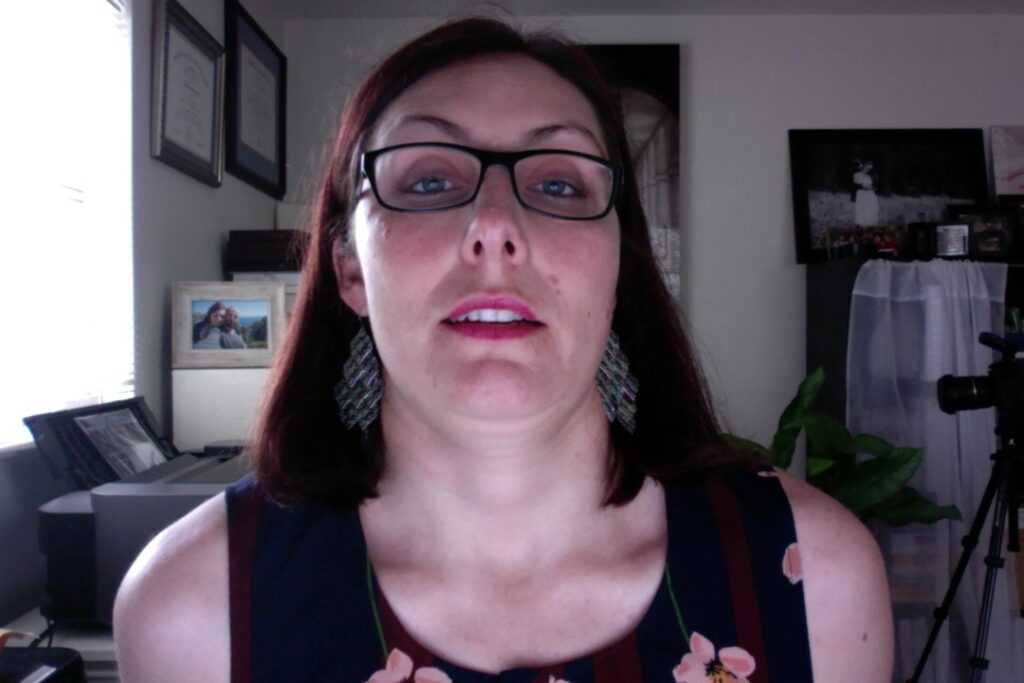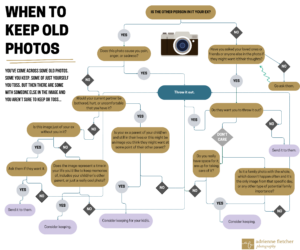The quick spread of COVID-19 has left us all trying to play our part in flattening the curve by staying and working from home. However, some people have had a harder time than others adjusting to the new virtual ways we must now engage in business. By now, we’ve all heard the nightmares about people who are just learning how to use video chats and virtual meeting rooms, who have made the mistake of thinking their cameras weren’t on during a quick bathroom break, or when they get up to grab coffee and forget that people can see they don’t have on pants.
Those are definitely worst-case scenarios but the truth is that the coronavirus didn’t stop people from continuing to make assumptions based on appearances, and so it’s still important in a professional virtual setting to try to look as professional as you would in real life.
As someone who has to constantly check that the person in front of a camera looks their best like for a living, I have definitely noticed where people can make improvements on their professional online setups too. Individually, each of these seem like some they wouldn’t be a big deal, but used all together can really elevate the level of professionalism you give off in a Zoom or other type of virtual meeting.
1. Lighting
Let’s start with some basics. Lighting plays a huge role in how you look like on a video call and can be the difference between you looking like a vampire, not seen at all, or like a normal human being. Here are some lighting scenarios to be aware of:

Backlighting – Terrible
Although can be very beautiful and creative when it comes to portraits, this makes for terrible lighting for a Zoom meeting. Basically, your face can be in full shadow while your background is blown out. Throw this option out.

Top lighting – Not great
This is what happens when you are sitting directly under the light. You might think this would be a great source of lighting but the truth is, it cast all sorts of unflattering shadows down your face.

Side lighting – Pretty good
If you’ve got a window, side lighting is a pretty good option. Not as good as facing the window, but for the most part can light up a good deal of your face. In the photo above, I have side light coming in from my window and from a little lamp. It actually looks best without the side lamp but I wanted to give it a little stronger effect since it’s an overcast day. In general I’d avoid multiple types of light sources if possible because you can see it will cast different colors on your face (here the yellow/orange). As you can see there’s still some unevenness to the lighting on my face but overall not too bad.
Side note – overcast skies are perfect for window lighting!

Front lighting – Great
If you can find a place in your house where the background behind you isn’t too cluttered or awkward, facing a window for lighting is almost always going to be your most flattering light when on a work call (or any video chat for that matter).

Ring light or other professional lighting gear – Great
So, you can always buy a light that is made for online video making. There are all sorts of selfie video light options out there that aren’t even that expensive. This image was taken using a Flashpoint ring light, which is a circular light that you can usually find relatively cheap on Amazon. In general, these are a great option if you think you might continue Zoom meetings or video calls longer term but probably unnecessary for most people stuck at home only temporarily.
Whichever lighting you decide to go with, just be aware that the better your face is lit, the more professional the image looks.

2. Camera angle and computer height
By now, most people who take selfies regularly can tell you, you never want the camera looking up at you when your face is so close to the screen. This is totally true for Zoom meetings. No one wants to look up your nose and no one likes to feel like they have 800 double chins.
Do yourself a favor and bring the computer camera at eye level. This is also going to make video chatting with you look most realistic. You might think having the camera at a little higher angle, looking down, would be most flattering, and that might work in photos, but for video, you’re just going to look a little weird – and definitely not professional – if you look like you are talking upward at the person on the other end.

Similarly, you’re not going to want your computer height too low or high. For starters, if you have the computer sitting too low, especially if you are pretty tall, you’ll cut off the top of your head and highlight your neck…or lower…need I saw more? If the computer is sitting too high, you risk looking like your head is chopped off and floating on a platter.
3. Background and limiting distractions
Ok, don’t get me wrong, we are all doing what we can to just survive at the moment and the reality is that people are dealing with home schooling kids who are stir-crazy, sometimes aging parents who live with them, restless pets, living rooms and dining room tables that didn’t magically get turned into a home office space you might see on HGTV, and just overall limited options of space and light. We all get it, we totally understand. However, just being a little more attentive to what is happening behind you on a video call, can make a world of difference while trying to conduct business. It’s not because people are going to judge your living conditions, it’s more so about limiting distractions.
The plainer the background, the less distracting it is for the person watching you. So for example, if you know there’s a chance for a little kiddo to come interrupt a meeting even though you’ve told them 800 times TODAY, not to come in when you’re in a meeting, if you just have a plain wall behind you, it will be easier for the interruption not to take away too much from the flow of the video call. If you know you won’t have any kid/pet/grand-person/spouse interruptions, you can get away with more things in the background like your kitchen, a bookshelf, or in my case, my office has a ton of photos around and it kind of matches what I do anyway so (I think) it works.
If all else fails, a curtain or digital background works in that they take away distractions. For business meetings, I’d say nix the temptation to put fake backgrounds like Mars or a beach behind you if you choose the digital route. It’s funny for like a minute but then it goes back to being a distraction.

At the end of the day, it’s hard enough to capture focus on a call when not in person, so again, the plainer the background the better so that your audience can concentrate on what you’re saying, not what’s around you.
4. Unnecessary movement
We’ve already gone over that some interruptions when we are cooped up with family and pets will be unintentional but unavoidable. But, a distraction that you can control is the amount of unnecessary movement you are doing while on the call. I know it’s convenient but stop eating during Zoom work calls. If it’s a work virtual happy hour that’s one thing, but in general your bag of chips or chewing habits are so distracting during a professional call. Just like in real life, if it’s wasn’t literally a lunch meeting, don’t bring food for your virtual call.
I will add one exception to this and that’s for drinking coffee/tea/water. Most people are used to people already doing those in regular meetings so feel free to keep hydrated and caffeinated.
Other movements to avoid…looking down at a phone or fiddling with papers that clearly don’t have anything to do with the meeting, constantly scratching your face or head or shoulders, playing with your hair, getting up and moving around – while either taking the video chat with you or leaving it without you, and fidgeting with the camera angle. Set a good example for your kiddos/nieces/nephews and just sit still for a moment!
Also, this should go without saying, but all of these are also true when you are on mute in a large video conference call where people can still see you but just not hear you.
Also, mind your posture and facial expressions. It’s easy to look bored during a long call but don’t forget your boss or prospective client is on the other side.

5. Dress like you would for work
I realize that every job has a different idea of what’s considered acceptable to wear to work. Some were already, pre-COVID, pretty casual. Just don’t forget that if you are on a professional video call, wear what you would if you were showing up in person. Would you usually show up to a sales meeting in a sweatshirt with a hat on? No? Then don’t do it on a video work call either. Again, some people have very casual work dress codes but try to remember what your company’s was before everyone decided to stay in PJs all day and “show up” accordingly. It will only help increase the look of professionalism over a Zoom meeting.
In fact, it may even motivate you to be more productive if you are working in work clothes instead of lounging clothes. At the very least it creates a boundary between home and work that used be called a commute and an office. Take it from someone with a home office in normal times, any small thing that can separate your at-home work life from your at-home home life, makes a big difference in getting your brain to preform when it needs to work, and turn off when it needs to relax. When the lines blur, it’s harder to do both.



